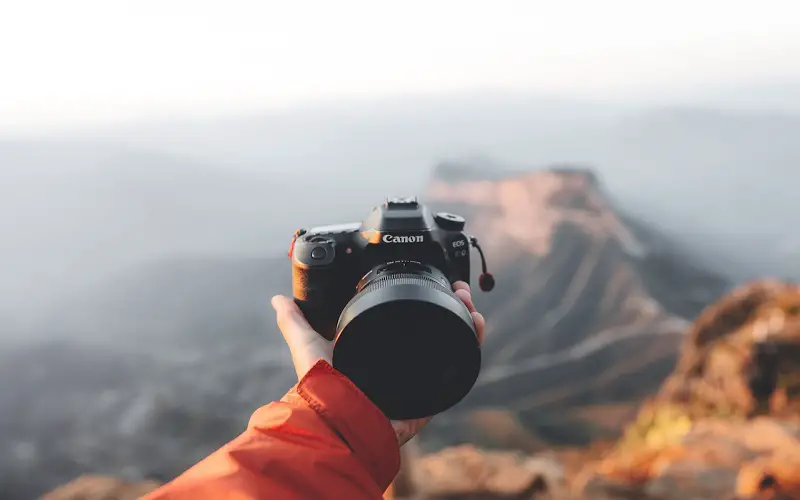In recent years, mobile photography has brought joy back to taking pictures. You can unleash your creativity using cutting-edge technologies and features. Mobile photographers now have access to various powerful tools that make photography tasks much simpler and more refined. Nowadays, phones come with multiple camera lenses, features such as night mode, and AI-assistant, which play a significant role by effortlessly and automatically adjusting settings based on AI algorithms that are employed to enhance the picture quality and various other aspects of photography. These modern frameworks and tools allow users to capture and refine their images without any need for post-processing or any requirement to use third-party software or hardware.
1. Essential Planning: For Stunning Visuals And Effects
It is crucial to plan for awestruck photography. Before doing photography, it is required to first define your objectives, then choose a location for photography, determine the lighting conditions, and select proper equipment at the time of photography for the appropriate execution of the required tasks. This results in practical photography, where the desired output is generated and sharp, clear, and aesthetic photos are captured.

2. Lighting: For Adding An Extra Edge To Photography
Turning on the flash outdoors is a trick that wedding photographers have used for years. If you want to impress your subjects, position them in the open shade with an excellent background in the distance, then turn on the fill flash and make sure you are standing within 10 feet. The camera will balance the amount of light from the moment with natural background illumination, resulting in an evenly exposed portrait. By putting the subjects in the shade, you can control the lighting.

3. Composition: The Rule Of Thirds
The rule of thirds has been around ever since the artist picked up the paintbrush. The power of thirds has been the central compositional guide for the virtual artist, not just photographers. Take your time composing your images, concentrating on the placement of not only your primary subject but also the imagery surrounding that subject. With imaginary lines running horizontally and vertically divided by thirds in your frame, try to place your subject at one of the four intersecting points where these lines meet.

4. Discover High Dynamic Range (hdr)
HDR is a series of images taken at different exposures that, when combined in software, contain the entire dynamic range of a scene, from the extreme shadows to the extreme highlights, and everything in between. An HDR image, when shot and processed correctly, will give you detail in a much more extensive dynamic range than a normal photograph can present.

5. Setting The Proper Iso
The lower the sensitivity rating (ISO), the finer the grain. Whenever possible, set your camera to the lowest ISO you can for the best possible image quality. If you are shooting in low light or fast action, you will need to increase the ISO to achieve the shutter speed required, but it may increase the amount of image noise in your camera.

6. Portrait Mode For Stunning Background
Shoot in portrait mode, which can result in an appealing background. Focus on the subject in the foreground and blur the scene. It adds depth and draws attention to the main topic. By utilizing this method, photographers can increase their captivating visuals. Portrait mode elevates your game to new heights. By using portrait mode, anyone can effortlessly achieve visually pleasing photos.

7. Burst Mode: For Incredible Shots With Fantastic Action
We use burst mode for shooting action shots or creating unpredictability in the background. It is commonly used in wildlife photography and action scenes where fast capturing of action is required. It allows you to capture multiple photos with a single tap. Furthermore, it is also great for street photography to capture moving bodies. This feature takes photography to the next level.

8. Keep Your Phone Steady: For Cinematic And Shake-free Shots
Phone shakes can result in blurry photos. Even if the phone moves slightly, the photo gets blurry. To capture low-light photos, it becomes essential to keep the phone steady so that you can get the sharpest and most cinematic picture. To do this, you may use a tripod. A Tripod helps in keeping the phone stable, and you may use night mode while using a tripod so that the picture comes out sharper even in low light.

9. Switch Lens: For Zooming In Or Out
Nowadays, switching lenses has become one of the most common ways to capture wide-angle photos or macro shots. By using this technique, you can adapt to various shooting experiences, and it allows you to click the picture according to your requirements. Telephoto lenses are being used to capture subjects that are closer to us. It is ideal for capturing wildlife, and portrait photography. Wide-angle lenses have a different purpose. A switching lens is used to capture a broader field of view. It is mainly used for landscape photography, which requires a wider frame.

10. Share Your Work: Learn And Build Together
Sharing allows you to share your work with different people around the globe so that you may get feedback on your work, personal satisfaction, and something to learn from others while contributing to society. This helps you to develop networks and opportunities around the globe where you can connect with professionals, and like-minded people in the same field. It enables you to share your experience so that you may expand your professional knowledge and gain some exposure as well.


















